Setting up lighting for your art studio has to be one of the most frustrating aspects of being an artist. I only recently got my studio lighting to a point where I am generally satisfied. Before that it was either too dim, bright, cool, warm or glary.
It has been no easy task getting to this point. Hopefully, this post will save you some frustration in setting up your art studio lighting. I am not going to dive deep into the technical side of things, as I want to keep this as simple and actionable as possible. I cover:
- Why It Is So Important to Get Your Art Studio Lighting Right
- First, Do a Quick Audit of Your Current Lighting
- Angle of the Light
- Intensity of the Light
- Temperature of the Light
- Color Rendering Index (CRI)
- Artificial Versus Natural Light
- Final Thoughts
- Additional Readings
- Want to Learn More?
- Thanks for Reading!
Why It Is So Important to Get Your Art Studio Lighting Right
The light you paint under is the single most important factor which determines the colors you see in your painting. It is something that will influence every color decision you make.
So of course, it is important that you put effort into setting up your art studio lighting correctly so that it is a pleasure to paint under. Otherwise, you may notice over time that all your paintings all seem to be too cool, warm, bright or dull, as a result of you trying to compensate for poor lighting.
When I first set up my art studio lighting, I was under the misconception that I needed to cram as much light into my studio as possible. So I opened all the windows, installed strong overhead lighting and even purchased some additional lamps.
But what I did not realize at the time was that more light is not necessarily better.
I could not just flood my studio with light and call it a day. Instead, I just needed to ensure that I had enough good light. When I write good, I mean pleasing to paint under. This may change from person to person.
The tricky part about studio lighting is it can be very difficult to tell if your lighting is poorly set up whilst you are under that light. Our eyes are incredibly good at adjusting to the surroundings, so what may seem like normal lighting could actually be very cool, warm, bright or dull lighting.
First, Do a Quick Audit of Your Current Lighting
The first step in setting up your art studio lighting is to do a quick audit of what lighting you already have. You should do this before you rush out and purchase an expensive home lighting system. Sometimes, all you need to do is make a few adjustments to what you already have, rather than go out and purchase all new equipment.
After doing your audit, consider if you need to adjust any of these light sources or add more light sources based on the information in the rest of this post.
Below is a photo of my studio (ignore the creative mess). As you can see, I have a medium-sized window with blinds to the left of the painting and overhead fixtures. I have a softbox there but I only use that for filming. All I needed to do to fix my studio lighting was replace the overhead light with a strong and more color-balanced fluorescent tube and change the position of my easel in relation to the light. I did not need to go out and purchase all new equipment.

Angle of the Light
The angle of the light in relation to your painting is the first thing I want you to consider. Ideally, the main light source will be behind you at a 45-degree angle to the painting. This will help:
- Spread the light evenly over your painting. You do not want half to be clearly lit, and the other half to be poorly lit. This would be a struggle to paint under.
- Make sure there is enough light on the painting.
- Avoid any glare on your painting (which is just light bouncing back at you). Below is an example of the glare you want to avoid whilst painting.
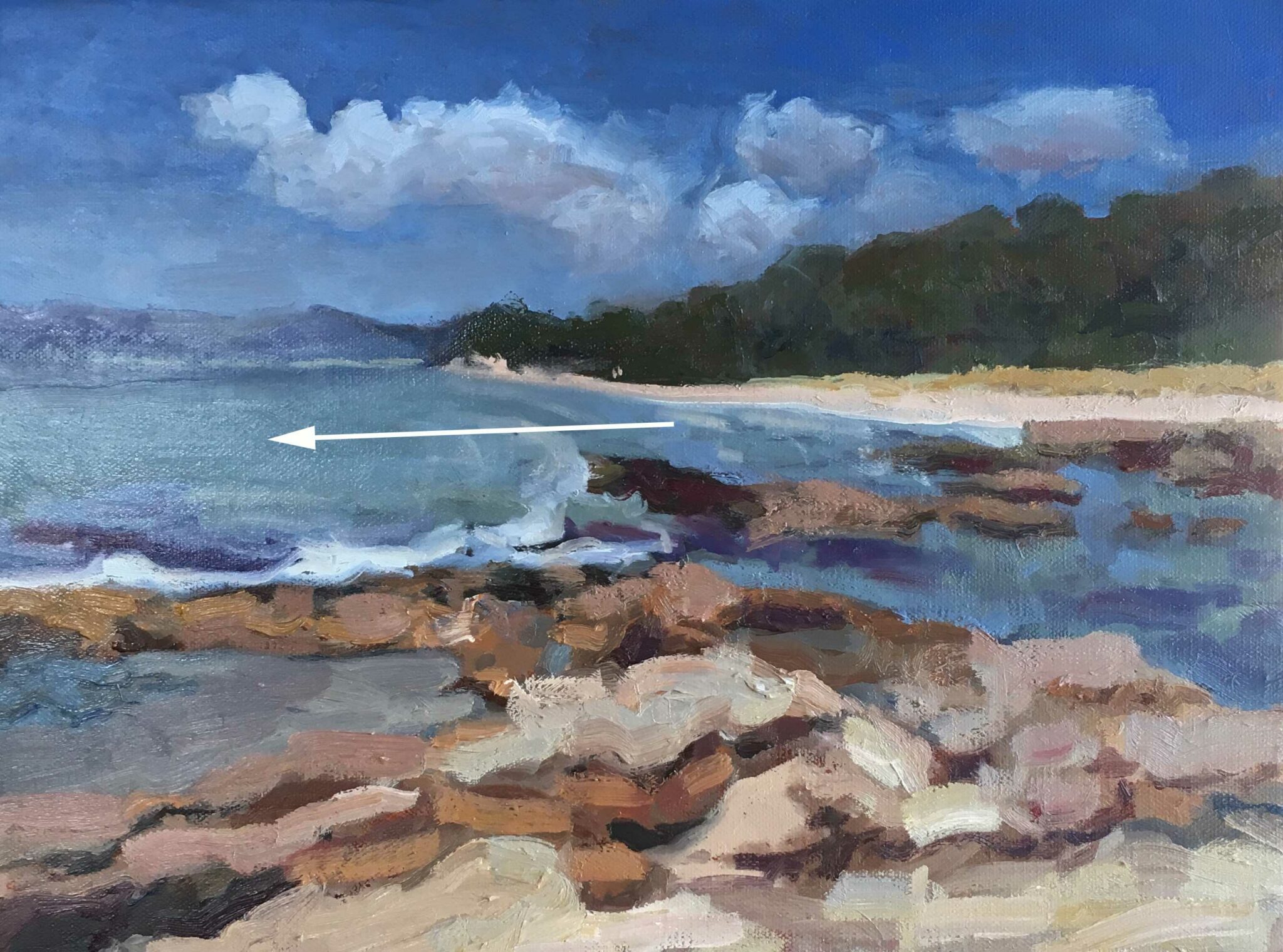
You should also make sure the light source is at a reasonable distance – not too far away as there would not be enough light hitting the painting, and not too close as the light would be uneven on the painting.
Tip: If you are not able to move the light source, then move your easel. You can even tilt your easel downward if needed.
Intensity of the Light
The intensity of the light is determined mainly by two things:
- The actual intensity of the light source.
- The distance of the light source from the painting. The greater the distance from the painting, the weaker the light will be on the painting.
It is important that you consider both of these factors. A strong light source which is too far away will still appear weak on the painting.
When purchasing lights, there are five things you need to look for. The type of the light, watts, lumens, color temperature and color rendering index.
Here are some of the different types of lights:
- Incandescent
- Halogen
- LED
- Fluorescent
- Compact Fluorescent Lamp (CFL)
Watts are a measure of how much power a light source uses, rather than how bright the light source is. Lumens however are a measure of how much light is actually produced. So when comparing the intensity of two different types of bulbs you should use lumens not watts. Watts is useful for comparing bulbs of the same type.
I am not going to compare all the different types of bulbs, as many others have already done this and the answer seems to always be the same. I recommend you stick with reasonably high wattage LED, fluorescent or CFL bulbs. The actual wattage and how many lights you need will vary depending on how far the lights are from your painting. Just make a judgment call and adjust as needed.
Color temperature and color rendering index are discussed below.
Temperature of the Light
Not all light is the same. Different light sources have different temperatures. Your colors will look different under the warm light of a sunset compared to the cool light of an overcast day.
Color temperature is measured by the Kelvin scale, illustrated below:

Here are some important reference points for natural light:
Clear blue sky: Cool temperature (bluish-white).
Midday Sun: Around neutral (white)
Moonlight: Slightly warm temperature (yellow)
Sunset: Very warm temperature (orange)
Artificial light also varies in terms of color temperature. You could have a very warm (orange) artificial light, or a very cool (blue) artificial light.
The color temperature of a light bulb is usually indicated by the manufacturer on the box.
In my studio, I use high-quality 5,000K fluorescent lights. Prior to that I was using fluorescent lights which were 4,000K (a slightly warm light). As a result, my paintings always ended up being far too cool, with blue dominating. This is because under the warm light I was unable to properly see blues, so I overcompensated by using too much blue. As I took my paintings out of the studio into a more neutral light, the dominance of blue became apparent. Below is one of those paintings, which turned out fine but as you can see I certainly favored the blue color tree:

I suggest anything from 5,000 to 6,000K. This is a fairly balanced color temperature to paint under. Anything outside of this range may be too blue/orange.
Color Rendering Index (CRI)
CRI is basically a quality rating of how well a light source is able to faithfully reveal colors. Natural daylight has a CRI rating of 100. As artists, we aim to replicate natural light in our studios.
When you are buying your lights, you should look for a CRI rating over 80 (the higher the better).
Artificial Versus Natural Light

In a perfect world, we would all have large, North facing windows to allow an abundance of natural light into our studios. But in reality, most of us need to rely more on artificial lighting. In fact, even if you do have a large North facing window, you would want artificial lighting for painting at night.
Artificial light has some great benefits:
- It is consistent. You do not have to worry about the natural light constantly changing.
- It allows you to paint at any time, including night.
- You can tailor it to meet your needs. If you want to paint in a warm light, then you can set up warm lights. If you want to paint in cool light, then you can set up cool lights.
In a perfect world, I would have both – a large North facing window and lots of high quality artificial lights for painting at night.
Final Thoughts
Studio lighting does not need to be that complex. At the end of the day, all that is important is that you have:
- The right angle of the light
- Enough good light (reasonably high lumens and 80+ CRI)
- A balanced color temperature
The easiest solution is to just grab a few compact fluorescent lamp bulbs around 5,500K and secure them at a 45 degree angle to your painting.
I will also say there is no perfect lighting solution. You will probably need to be creative and find out what works for you.
Additional Readings
How To Paint Under Different Light Sources
Want to Learn More?
You might be interested in my Painting Academy course. I’ll walk you through the time-tested fundamentals of painting. It’s perfect for absolute beginner to intermediate painters.
Thanks for Reading!
I appreciate you taking the time to read this post and I hope you found it helpful. Feel free to share it with friends.
Happy painting!
Dan Scott

Draw Paint Academy
About | Supply List | Featured Posts | Products
Affiliate disclosure: There may be affiliate links to recommended products in this post. If you purchase through any affiliate links I will receive a small commission at no additional cost to you. These funds are used to help grow this website and spread art education to people around the world. Thanks!


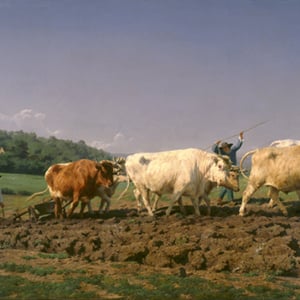
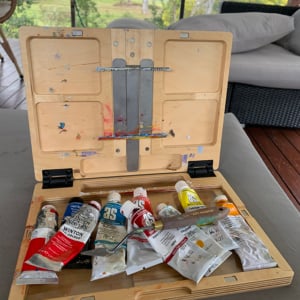
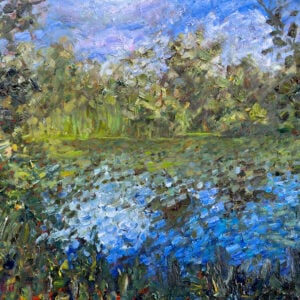
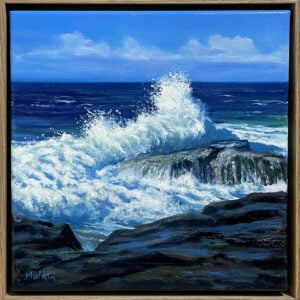

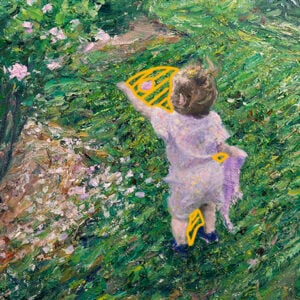
In my old age, I moved to a house with a small, what l call, sunroom. It has 3′ x 5′ windows, 2 on South end and 3 on West side which are shaded after 3:00pm. It also has two full glass doors on the North end which are shaded by a porch roof.
I’ve always had multiple creative outlets, but just now ready to try painting. My question is: Is this too much light for this room to be used for painting? Should I curtain the windows?
Hi Emee
Sorry for my delay. Too much light is usually not a problem, especially if it is natural light. The main problem you may face is a change in light as the sun moves.
Dan
Hello Dan, I found this an extremely concise and helpful article and very timely for me also as I’m setting up a new studio.
Very many thanks,
Bruce
Thanks Bruce! Good luck setting up your studio. Let me know if you have any questions. Dan
Hi Dan,
I have a studio and wrestle with the lighting question every time I paint. Your article was perfect. It was so helpful is such a concise, easy to understand way.
Thank you!
Kelly Fordham
Thanks Kelly!
This is very helpful. I have been using a room in our house for a studio – it has windows on the south, west and north. Generally I have enough light. However yesterday was a very dark cloudy day and too dark to paint. So I am looking into some of your suggestions for the compact fluorescent bulbs to see what I can do with some additional light without too much cost – great article, thank you.
Hi Joan. Thanks for the comment. The compact fluorescent bulbs are fantastic for those dark days.
I have 1 overhead ceiling fan that was there when I moved in and installed color balanced bulbs. it does not give me enough light on my canvass so I added a moveable Ott light. the problem I have is with glare. Seems no matter what I do I have glare on my canvass. Any suggestions on how to improve this? I was thinking of getting another moveable light and putting it on the other side, but am not sure that would help with glare. it would help with light. thanks
I’m using track lighting that is directly above in the center of a small room (but the three lights can be aimed at different angles), and I have a problem with shadows.
How can I position or angle the lights so that I do not have shadows made by my hand? Angle the lights to a 45 degree angle to the canvas that is against the wall (with me sitting facing the wall/canvas, with the lights above and slightly behind me?).
Thanks!
Hi Dan, I enjoy your lighting information, I will use your suggestions. I’m getting ready to build my shed art studio in my back yard and will not only need light for painting but also for balanced lighting taking photos of artwork. Natural sunlight seem to be the best. Any suggestions on what type of bulbs?
I am creating a studio in my basement. I plan on using lites in a dropped ceiling at 8 feet plus in height. I plan on having a good amount of light. I was going to use 3500 K less but after reading some of the ariticles it seems that 5000K should be a better choice. Where can I buy 2×2 troopers that are 5000K that have a high CRI rating in the 80 plus range?
Hi Steve. Yes I agree – around 5,000K is a better option. I would make a trip to your local hardware store – they should have what you are looking for.
Dan
Hi! I’m building a house and getting my own little third floor art studio! I’m meeting soon with an electrician and am fortunate enough to tell him exactly what I need light-wise in my studio. I’ll have just one window and am not sure that will be sufficient for painting and I want to equip the room with good lighting for evening painting too. I understand everything you’re saying about color temperature, etc. of the ideal bulbs, but if you were in my situation and could choose ANY lighting system in a new studio-l, what would you put overhead?? Rows of fluorescent tubes, can lights with bulbs, a track system? Thanks so much!!!
Hi Larisa. Great question and one I will probably need to think over more. But yes, probably high-quality rows of fluorescent tubes would work well. However I am no expert in lighting so I would probably talk to a professional and tell them what I need and let them sort it out.
Thanks!
Dan
Hi Dan,
Thanks for a really useful article on specifics for lighting while painting. I want to find something that is rechargeable, small/portable that I can take with me when I am in a setting other than my own studio, such as in class or other group. I do not get my choice of seating in such settings and I find I need more light than what is supplied as my eyes are failing. I have been looking at these clip-on rechargeable lights designed for reading and “crafts”, but can rarely find the kelvin degrees (just says “cool” or “warm”) and I have never seen a CRI rating. Ideally I would want neutral K (btw, where did you get your 5500K lightbulbs–I haven’t seen that at all) and >80 CRI. Can you make any suggestions?
Hi Christine. Thanks for the comment. I got my lights from the local Bunnings (hardware store). As for decent portable lights, I will need to investigate this myself! Lighting is a tricky and annoying area unfortunately. I will let you know if I find anything. Dan
Hello Dan,
I must say as a lighting professional, I am surprised following your logic wouldn’t you worry about not seeing colors at the other end of the spectrum? Additionally 5000k lights are very blue shifted in our current mode of production of consumer products. Blue wavelengths are hard for our eyes too perceive and strain the eye…( think about how dull blue outdoor Christmas lights appear). Finally mid-day light anytime of the year is considered harsh. The golden hour is early and late in the day. Color rendering is what provides accuracy at any color temperature. To create less harsh light in film we use neutral density filters.
Finally the majority of Americans have much warmer lighting in their homes where art is displayed. So in your scenario a piece of art may look great in the studio but not so great in a collectors home. I would say any serious collector or producer of art would do themselves a favor to select the highest CRI lamp they can and select a lamp that produces light in a range from 3200-3600. Cool white at 4000 can be a little blue for displaying or producing art, can work ok. Again it’s CRI( color rendering index that supplies the color accuracy for the most part.
Hope this helps all understand lighting.
Thanks for sharing! Lighting is a tricky area for us artists so I, and I am sure my readers, appreciate your comment. Dan
The artist will tend to compensate ( unintentionally ) and make the work too blue with a warmer light . Also as far as “harshness ” , most including myself defuse the light as do most photographers. The celebrated North window lighting is getting the cooler mid day light , but it is gentle , as it is not direct light . When I paint plein Air ( out doors ) I don’t paint in direct sunlight put from a shaded area . Its not just light ” temperature ” it is also lumens , or intensity that factor into the equation of what works , and what is ‘comfortable ” .
I meant “but from a shaded area .
Thank you for ALL the very useful information in your article. I went and purchased the compact flourescent light bulbs you recommended. Now my problem is finding a lamp to support them. The lamp I wanted to put them in recommends maximum 13w self ballasted lamp. Any ideas on a lamp? I’m in an apartment and would not be able to hook up ceiling overheads. Thank you!
Hi. I have a 10ft x 8ft space between the kitchen and sun lounge it has no windows only light coming through double doors in sun lounge
Could I just use artificial lights
I have a small, south facing room with two windows. Day painting is fine with plenty of light but at night, with just one overhead light, the room is too dark and the glare annoying. Unfortunately, I can’t afford overhead track lighting or installing anything involving an electrician. Could you recommend a floor lamp for acrylic painting? Thank you.
Hi Dan
Thanks for the wise words: I have always used halogen lighting because the light always seemed so similar to natural light – or so I thought. I am now thinking that this was incorrect. I note that halogen bulbs don’t last long and are also very hot and energy-hungry.
As I prepare to set up my new studio for night painting, I am now trending to LED, with one or two ‘tower’ arrays, but would greatly appreciate your advice on bulb specs.
My large studio is in a converted warehouse with a cathedral ceiling.
Thanks for your helpful advice.
Regards/Steve
Thank you. I have a huge north facing window in our summer home in
Wisconsin, but in the winter I am in Florida in a corner room with
one 46 x70 south-facing window & one 29×70 West-facing window.
The light changes all the time, so this article really helped me!
Big Thanks!
Gigi